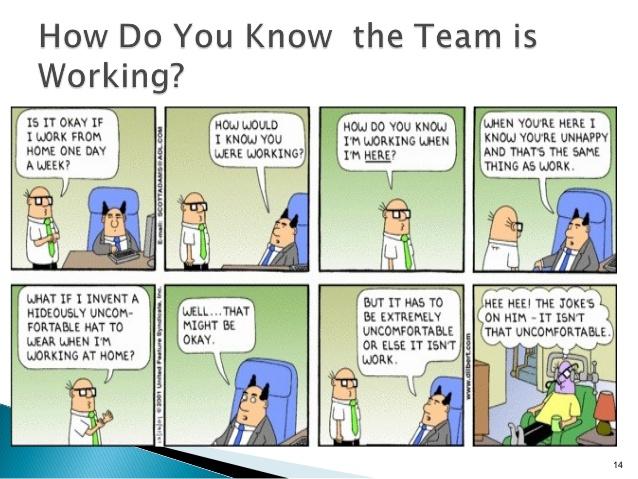Creating virtual teams of remote workers can be massively beneficial to businesses, but are the communication challenges starting to put you off? Don’t worry – there are ways to overcome them.
The benefits of working with virtual teams
There are many advantages to hiring remote workers and building virtual teams, which is why many businesses are already working in this way. The most obvious benefit, of course, is reduced overheads, which will be especially attractive to smaller businesses, startups, and those wanting to minimize spending.
But there are plenty of other benefits too. One of them is often talent and it is not hard to imagine that a skilled workforce is spread globally and not locally. Today, it is hard to find an agency that isn’t outsourcing at least one part of their work to talented freelancers around the world.
And the numbers support that statement. According to the survey done by SHRM in 2017, more than 60% of organizations now offer telecommuting technology benefits. On top of that, there are also some signs that remote working can actually improve productivity. Competent employees that can do more with less? An offer that is hard to refuse.
That being said, leading remote teams is not all sunshine and roses. Every business decision you make comes with its own set of benefits and disadvantages. Having virtual teams is no different.
Let’s see how to overcome the most common virtual team communication challenges.
Addressing the challenges
Whether it’s time zones, unfamiliarity, cultural differences, or anything else, there is a never-ending list of factors that can create obstacles to effective and efficient virtual team communication. And as we all know, strong communication is one of the most important elements when it comes to the overall success of any team project.
Due to these challenges, there are signs that some businesses may be stepping away from remote working. IBM, for example, has decided to move all of their remote workers back to the office. Sad? Yes. Surprising? Absolutely not. When you take a look at statistics which show that a whopping 57% of companies lack a remote working policy to support their dispersed teams, it’s not surprising that they are giving up.
However, the solution to these problems isn’t to call workers back to the office. Instead, it seems to make much more sense to take the appropriate measures to ensure that virtual teams have the tools and the training they need to communicate well with others, even if they’re divided by geography. In doing so, businesses can continue to take advantage of the many benefits of hiring remote workers.
So what factors are key to overcoming virtual team communication challenges?
A new focus on real-time
Firstly, you can’t afford to overlook the importance of ‘real time’. Unless you’ve been hiding under a rock, you already know that real time is fast becoming a business essential and it’s why things like online ‘chatbots’ for customer service support and real-time stock updates are rapidly taking off. Real-time is an aspect that can be incorporated into practically any area of business, including team communications.
Of course, virtual teams have many ways to communicate digitally, email being one of them. However, if you can benefit from real-time communication, it is time do ditch email and get everyone to install some team chat app.
A study published in the Academies of Management Discoveries journal found that, when it comes to dispersed teams, ‘burstiness’ was key to success. ‘Burstiness’ means rapid, real-time ‘bursts’ of information sharing through a chat tool. This can be done with any team chat app, particularly one with no limits on message history and a decent file storage limit for each team.
Using real-time communication tools like video conferencing apps or chat platforms helps reduce misunderstandings that often occur through email. These platforms enable quick clarification of tasks and goals, allowing teams to make faster decisions. Furthermore, with tools that support asynchronous and synchronous communication, teams can collaborate seamlessly across time zones, fostering a more inclusive work environment that values diverse work habits.
‘Big Picture’ awareness
There is often a feeling of isolation in virtual teams, which is normal. It is difficult to feel a part of the group when there is no physical team. Unfortunately, this can lead to some problems.
According to a Global Knowledge white paper titled ‘Successfully Managing Remote Teams’, 90% of virtual team communication issues are ‘people problems’, with just 10% being ‘technology problems’. Remote workers need to know they are part of something bigger.
So how do you achieve this? It all comes down to clarification and making sure all members of the team are clear on why they’re on the team and where they fit in. Start with role clarification, ensuring that each member of the team knows what they – and what everyone else – is contributing to the project. It should be clear from day one and you can easily evaluate it using post-training survey questions and asking each employee whether everything is transparent for them.
Then move on to end goal clarification. This means outlining how the team’s combined efforts fit in with the ultimate aims and goals of the business. Isolation can result in an introverted, passive approach to the task at hand, while what you want to see is an active approach to valuable teamwork.
Regular team-building activities and social calls can also help virtual teams feel more connected. By fostering opportunities for informal conversations and team bonding, workers can build relationships beyond the tasks they’re working on. This not only improves collaboration but also increases trust and morale among team members.
Cultural understanding
If a virtual team includes workers from all four corners of the globe, communications will naturally be a little trickier, whether that’s down to language differences or differences in culture. Studies have found that cultural understanding does make a big difference in virtual team communications, with a Journal of European Industrial Training study citing a major need for ‘cross-cultural communication improvement’.
Cultural awareness training is something that many businesses may wish to explore further. This can either be delivered by a professional provider or provided in-house.
Aspects such as history, socioeconomics, politics, religion, and human factors are often covered, as well as highlighting the importance and benefits of diversity in the workplace. If possible, you may wish to take culture into account when considering team selection factors, grouping those in similar areas, and with similar cultural beliefs, together where appropriate to improve team communication and boost familiarity.
Incorporating cultural understanding into the hiring process can further streamline communication. For example, understanding how certain cultures approach decision-making or the importance they place on hierarchy can help managers navigate sensitive topics and ensure that all team members feel respected and valued.
Access to business information
There is a growing need for business information and vital data to be available for access from everywhere, at any time. And it’s not just remote workers and virtual teams that are contributing to this growing need. The concept of the ‘9 – 5’ is quickly dying out (sorry Dolly), with flexible working policies, hot desks, and off-site client visits beginning to take over.
But this article is about virtual teams, so let’s focus specifically on them.
Having vital business information available to everyone on the team is essential when it comes to ensuring that all workers are on the same page. Quite simply, communication is likely to be improved if all members of the team have access to the same data, at the same time.
You can do this by utilizing cloud storage in the workplace. With cloud storage, you can remove the need for individual members to store their data locally, instead of providing them with a way to centralize their storage and make it accessible to the whole team. Tools like Google Docs, Box, and Dropbox make this extremely easy.
Team oversight and regular updates
We’re not going to sit here and tell you that virtual teams should be treated in the exact same way as physical teams. They shouldn’t.
However, there is one aspect that does transcend both. That’s the need for regular ‘get together’. These meetings provide an opportunity for the whole team to update on progress, plan, brainstorm, collaborate in real time, and solve any problems that may have arisen.
The same as businesses need to get to know their target audience to be able to grow, virtual team members need to get to know each other in order to grow team synergy.
On top of everything mentioned, some face-to-face communication can also help project leaders to keep their team on track by ensuring no one is slacking or avoiding their responsibilities.

Managing time-zone differences
One thing we struggled when we started to work with freelancers, was how to properly define due dates for certain tasks.
Here is an example.
We are based in Europe and collaborate with some talented people from the US. The time difference is 8+ hours depending on their exact location. Let’s imagine that we are waiting to get an article from a writer that has to be published on the 7th. If we assign them the 7th as the due date, the likely scenario is that we will get the article a few hours after we already left the office.
One way to avoid that is to make sure that all people working together know the location of their team members and are aware of the time differences, so the due dates are specified accordingly. It also helps if they are not waiting for the last minute to complete assigned tasks 😊
Like cultural beliefs, time zones are another area to think about when considering team selection factors.
It’s time to focus on communication
It’s no secret that there is an ever-growing skills gap, making it more difficult for businesses to find the talent they need to help their business to grow, to develop, to take new opportunities, and to reach their goals. Businesses are having to look further away and dip into new talent pools in order to succeed. Remote workers and virtual teams really are the future of the workforce, and the key to economic growth.
This is not a time to be calling workers back into the office and hiring exclusively from local talent pools. This is a time to make changes, to utilize new technologies, and to take action. It is a time to find ways to overcome the challenges and obstacles in the way and derive more value from your remote workers.
Do you have some specific issues handling remote teams? Let’s discuss it in the comments below.










Add comment